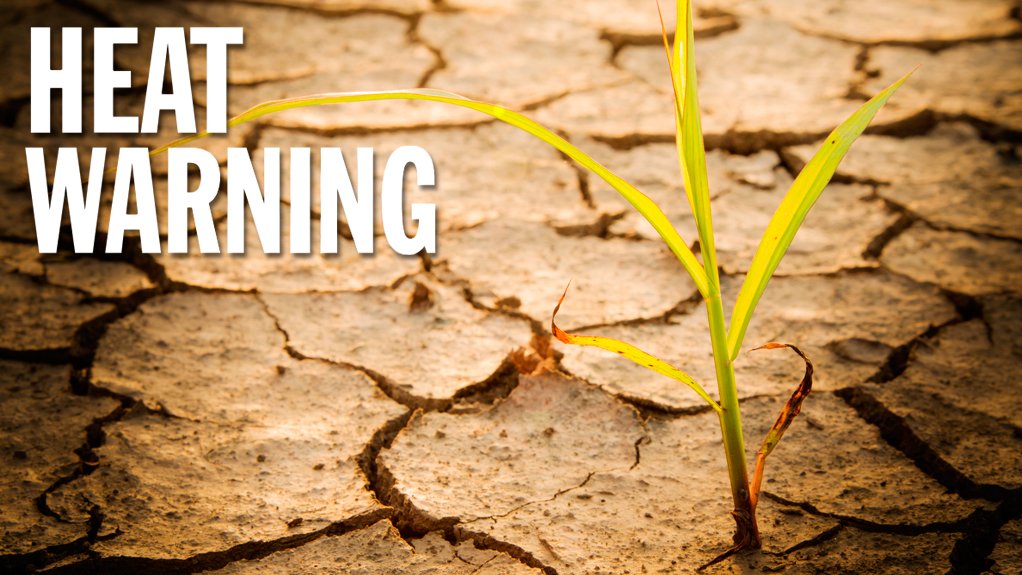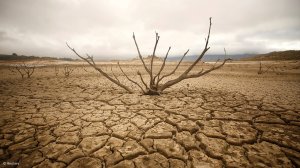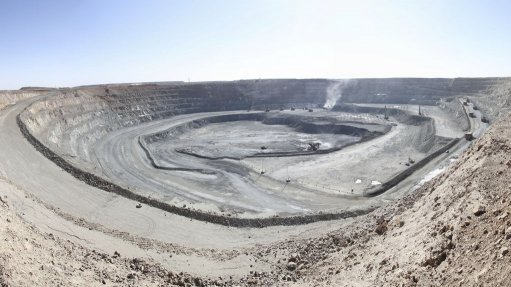Farmers urged to prepare for El Niño to trigger record-high temperatures




HOT AND DRY The coming months might lead to a hot and dry summer for most of South Africa, leading to drought
Photo by Reuters
IMPACT ON AGRICULTURE Scientists have warned that El Niño could cause another drought
Photo by Bloomberg
South Africans have experienced an unusually warm and wet winter, but climate experts are warning that this summer will be one of the hottest and driest on record, which could have a significant impact, particularly on the agriculture sector.
The US National Centers for Environmental Prediction, a division of the National Weather Service under the National Oceanic and Atmospheric Administration, has reported the observation of El Niño conditions, with a forecast (the likelihood of which exceeds 95%) that conditions will persist from this December to February next year. This projection comes after a three-year dominance of the cooler La Niña pattern.
El Niño is a naturally recurring climate pattern marked by warming of the Pacific Ocean, leading to worldwide shifts in weather patterns.
Equatorial sea surface temperatures (SSTs) have been notably elevated across the central and eastern Pacific Ocean, aligning with El Niño conditions. These atmospheric anomalies are also in line with the tropical Pacific patterns associated with El Niño.
At the El Niño 2023 Summit, hosted by the Extreme Climate Events Research Alliance at the University of Pretoria in June, which Engineering News & Mining Weekly attended, meteorologist Professor Willem Landman emphasised that climate modelling evidence suggests a doubling in the frequency of extreme La Niña events, owing to greenhouse warming. This indicates a shift from a historical occurrence of once every 23 years to once every 13 years.
“About 75% of the increase occurs in years following extreme El Niño events, thus projecting more frequent swings between opposite extremes from one year to the next,” he said.
Temperature Increase
Central Pacific Ocean SSTs are exhibiting warming trends, and the predictable nature of this El Niño-type warming offers a lead time of several months for preparation.
Forecasts for the 2023/24 El Niño have been in place since the latter half of the southern hemisphere summer and northern hemisphere winter and, while uncertainties remain about the event's intensity, a substantial majority of forecast models are predicting an El Niño occurrence.
Its potential manifestation as projected could profoundly impact on the upcoming summer climate and weather in Southern Africa, as emphasised by Alliance for Collaboration on Climate and Earth Systems Science director Dr Neville Sweijd at the El Niño 2023 Summit.
According to Reuters, meteorological studies indicate the probability of a new record-high global average temperature in 2023 or 2024, fuelled by climate change and the expected return of El Niño.
Climate models point to a transition from the La Niña weather pattern, which has persisted for three years and has generally lowered global temperatures, to the warmer counterpart, El Niño, later this year. During El Niño, equatorial westward winds slow, causing warm water to shift eastward, resulting in elevated surface ocean temperatures.
European Union Copernicus Climate Change Service director Carlo Buontempo believes that El Niño is closely linked to record-breaking global temperatures. He says the occurrence of this phenomenon leading to such temperature records in 2023 and 2024 is "more likely than not."
To date, 2016 is recorded as the hottest year globally, coinciding with a robust El Niño event. The World Meteorological Organisation (WMO) forecasts a 66% probability that the average near-surface global temperature from 2023 to 2027 will surpass preindustrial levels by at least 1.5°C for at least one year.
While not signifying a lasting breach of the 1.5 °C Paris Agreement benchmark, the WMO underscores the increasing likelihood of transient crossings over this threshold.
WMO secretary-general Professor Petteri Taalas has cautioned against an impending breach of the 1.5 °C level. While emphasising this would not lead to a permanent exceedance, he voiced concerns in May about an escalating frequency of temporary breaches, highlighting the gravity of the situation for health, food security, water management and the environment.
Expected to develop in the coming months, a warming El Niño event is projected to conflate with human-driven climate change, propelling global temperatures into uncharted domains. This forecast occurrence holds far-reaching consequences and necessitates comprehensive preparation.
The Global Annual to Decadal Climate Update, authored by the UK’s climate predictions entity Met Office, underscores a 32% likelihood of the five-year mean surpassing the 1.5 °C benchmark. This probability has surged since 2015, when it was close to zero. From 2017 to 2021, the probability of exceeding this level reached 10%.
Met Office expert scientist Dr Leon Hermanson pointed out in May the persisting trend of rising global mean temperatures, progressively distancing us from the climate norms to which we have grown accustomed.
The WMO says the average global temperature in 2022 was about 1.15 °C higher than the average recorded from 1850 to 1900. The moderating impact of La Niña conditions in the past three years curbed the long-term warming tendency.
However, La Niña concluded in March 2023, and the imminent El Niño forecast for the coming months may disrupt this trend. Typically, El Niño leads to increased global temperatures in the year following their development, as foreseen in 2024.
Predictions indicate the yearly mean global near-surface temperature from 2023 to 2027 will range from 1.1 °C to 1.8 °C higher than the 1850 to1900 baseline. This baseline is established before the emission of greenhouse gases from human and industrial activities.
Further, there is a 98% chance that at least one of the next five years will surpass the temperature record set during the robust 2016 El Niño event. The likelihood of the five-year mean temperature from 2023 to 2027 surpassing the levels of the previous five years is also estimated at 98%.
South African Impact
Various scientists and experts have cautioned South Africa's agriculture industry and its workforce to brace for potential scorching summers. The impending El Niño is expected to contribute to soaring temperatures, as evidenced by the unfortunate loss of several farmworkers in the Kakamas region of the Northern Cape during January, owing to extreme heat over the past 12 months.
Despite this, Sweijd acknowledged the uncertainty surrounding the projected El Niño impact, underscoring the complex interplay of El Niño strength and its ensuing consequences.
The impacts of recent extreme El Niño events on South Africa, particularly those occurring in 2018/19 and 2015/16, have highlighted the nation’s susceptibility to climate variability, with the latter event ranking among the most powerful El Niño occurrences on record.
The El Niño-induced droughts during these periods had serious repercussions. The resultant drastic reduction in rainfall adversely affected various regions, culminating in severe water shortages, agricultural losses, and detrimental effects on livestock and wildlife.
South Africa's agriculture sector bore the brunt of the droughts, leading to crop failures and diminished production in crucial maize-growing regions. The adverse consequences also affected the country's food security and prices.
The recent extreme El Niño events have shed light on South Africa's vulnerability to climate fluctuations, stressing the urgency of readiness and adaptive strategies to mitigate the potential impacts of similar occurrences in the future, Sweijd noted.
Predictions indicate that the extent of drought in South Africa is expected to be relatively contained, mainly affecting the Cape provinces and particularly regions along the coastal areas rather than the interior. According to meteorologist Dr Johan Malherbe, there has been minimal to no expansion of drought areas across the country.
Although the country has not had a substantial enlargement of drought regions, drier conditions in the northern parts of the summer rainfall region have been recorded in recent months. Additionally, shorter-term drought conditions have emerged over the north-western areas of South Africa.
The International Water Management Institute (IWMI) and the International Maize and Wheat Improvement Center recently issued a warning that the Limpopo river basin was expected to receive lower rainfall, with higher-than-average temperatures from June to November.
Although the forecast fluctuations are generally low during this period, there are concerns about a negative impact on rainfall in the basin, particularly in November, which marks the beginning of the rainy season. The lower-than-average rainfall could potentially delay planting dates for crops such as maize in 2023, leading to decreased yields because of heat and water stress later in the 2023/24 season.
Further, the forecast indicates that mean temperatures in the Limpopo basin are expected to be above average from June to November. High temperatures accompanied by rainfall deficits in November could exacerbate water deficits and environmental stress for maize seedlings.
“Farmers need to be educated on drought-tolerant seeds that can withstand water and heat stress. Fire breaks ought to be put in place now as elevated temperatures increase the risks of wildfires. Water conservation and harvesting technologies need to be promoted to optimise the little rain that may come.
“If ever there was a time to prepare, it is now, to lessen the burden of hunger and food scarcity associated with the lurking super El Niño conditions,” IWMI and University of KwaZulu-Natal school of agricultural, earth and environmental sciences expert Professor Tafadzwa Mabhaudhi said in July.
Comments
Press Office
Announcements
What's On
Subscribe to improve your user experience...
Option 1 (equivalent of R125 a month):
Receive a weekly copy of Creamer Media's Engineering News & Mining Weekly magazine
(print copy for those in South Africa and e-magazine for those outside of South Africa)
Receive daily email newsletters
Access to full search results
Access archive of magazine back copies
Access to Projects in Progress
Access to ONE Research Report of your choice in PDF format
Option 2 (equivalent of R375 a month):
All benefits from Option 1
PLUS
Access to Creamer Media's Research Channel Africa for ALL Research Reports, in PDF format, on various industrial and mining sectors
including Electricity; Water; Energy Transition; Hydrogen; Roads, Rail and Ports; Coal; Gold; Platinum; Battery Metals; etc.
Already a subscriber?
Forgotten your password?
Receive weekly copy of Creamer Media's Engineering News & Mining Weekly magazine (print copy for those in South Africa and e-magazine for those outside of South Africa)
➕
Recieve daily email newsletters
➕
Access to full search results
➕
Access archive of magazine back copies
➕
Access to Projects in Progress
➕
Access to ONE Research Report of your choice in PDF format
RESEARCH CHANNEL AFRICA
R4500 (equivalent of R375 a month)
SUBSCRIBEAll benefits from Option 1
➕
Access to Creamer Media's Research Channel Africa for ALL Research Reports on various industrial and mining sectors, in PDF format, including on:
Electricity
➕
Water
➕
Energy Transition
➕
Hydrogen
➕
Roads, Rail and Ports
➕
Coal
➕
Gold
➕
Platinum
➕
Battery Metals
➕
etc.
Receive all benefits from Option 1 or Option 2 delivered to numerous people at your company
➕
Multiple User names and Passwords for simultaneous log-ins
➕
Intranet integration access to all in your organisation





















